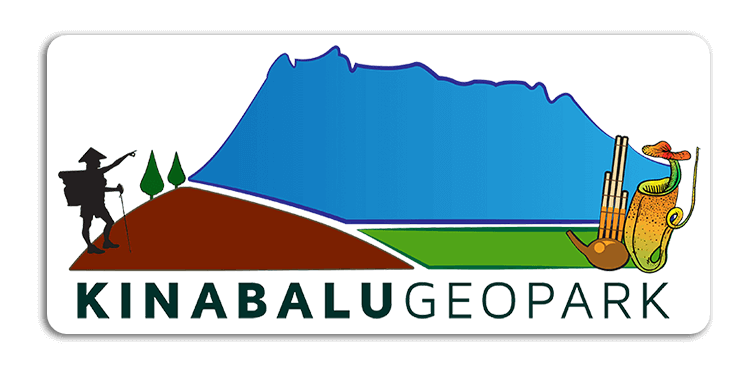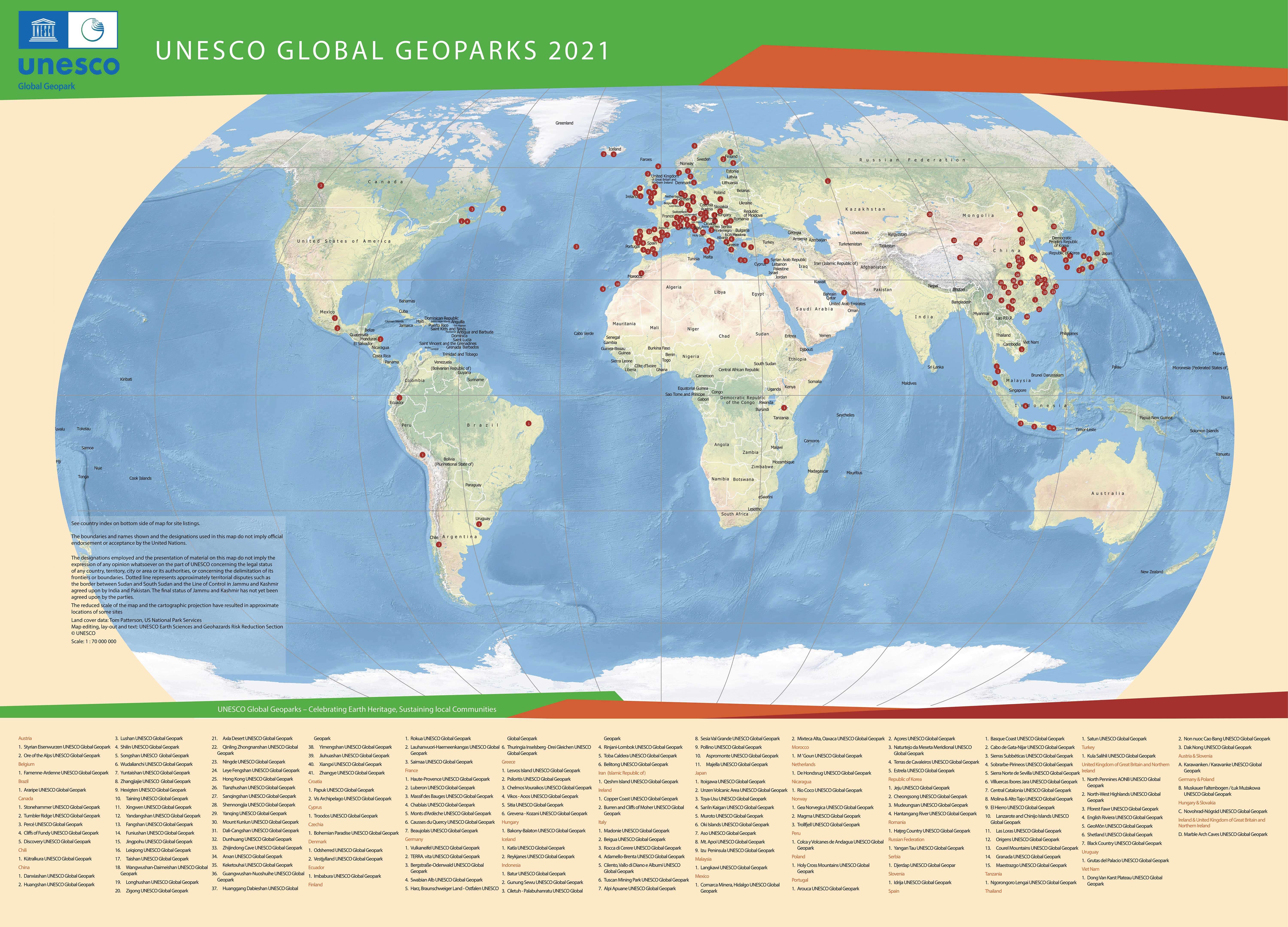UNESCO Global Geopark
UNESCO Global Geoparks are single, unified geographical areas where sites and landscapes of international geological significance are managed with a holistic concept of protection, education and sustainable development. A UNESCO Global Geopark uses its geological heritage, in connection with all other aspects of the area's natural and cultural heritage, to enhance awareness and understanding of key issues facing society, such as using our Earth's resources sustainably, mitigating the effects of climate change and reducing the impact of natural disasters. By raising awareness of the importance of the area's geological heritage in history and society today, UNESCO Global Geoparks give local people a sense of pride in their region and strengthen their identification with the area. The creation of innovative local enterprises, new jobs and high-quality training courses is stimulated as new sources of revenue are generated through geotourism, while the geological resources of the area are protected.
A Bottom-Up Approach
UNESCO Global Geoparks empower local communities and give them the opportunity to develop cohesive partnerships with the common goal of promoting the area's significant geological processes, features, periods of time, historical themes linked to geology, or outstanding geological beauty. UNESCO Global Geoparks are established through a bottom-up process involving all relevant local and regional stakeholders and authorities in the area (e.g. land owners, community groups, tourism providers, indigenous people, and local organizations). This process requires firm commitment by the local communities, a strong local multiple partnership with long-term public and political support, and the development of a comprehensive strategy that will meet all of the communities' goals while showcasing and protecting the area's geological heritage.
Geological heritage of international value
In order to become a UNESCO Global Geopark, the area must have geological heritage of international value. This is assessed by scientific professionals, as part of the “UNESCO Global Geopark Evaluation Team”. Based on the international peer-reviewed, published research conducted on the geological sites within the area, the scientific professionals make a globally comparative assessment to determine whether the geological sites constitute international value.
Management
UNESCO Global Geoparks are managed by a body having legal existence recognized under national legislation. This management body should be appropriately equipped to address the entire area and should include all relevant local and regional actors and authorities. UNESCO Global Geoparks require a management plan, agreed upon by all the partners, that provides for the social and economic needs of the local populations, protects the landscape in which they live and conserves their cultural identity. This plan must be comprehensive, incorporating the governance, development, communication, protection, infrastructure, finances, and partnerships of the UNESCO Global Geopark.
Visibility
UNESCO Global Geoparks promote sustainable local economic development mainly through geotourism. In order to stimulate the geotourism in the area, it is crucial that a UNESCO Global Geopark has visibility. Visitors as well as local people need to be able to find relevant information on the UNESCO Global Geopark. As such, UNESCO Global Geoparks need to provide information via a dedicated website, leaflets, and detailed map of the area that connects the area’s geological and other sites. A UNESCO Global Geopark should also have a corporate identity.
Networking
A UNESCO Global Geopark is not only about cooperation with the local people living in the UNESCO Global Geopark area, but also about cooperating with other UNESCO Global Geoparks through the Global Geoparks Network (GGN, see box page 6), and regional networks for UNESCO Global Geoparks, in order to learn from each other and, as a network, improve the quality of the label UNESCO Global Geopark. Working together with international partners is the main reason for UNESCO Global Geoparks to be a member of an international network such as the GGN. Membership of the GGN is obligatory for UNESCO Global Geoparks. By working together across borders, UNESCO Global Geoparks contribute to increasing understanding among different communities and as such help peace-building processes.
Global UNESCO Geoparks Network
In April 2022, the UNESCO’s Executive Board approved the designation of 8 new sites demonstrating the diversity of the planet’s geology as new Geoparks. With this year’s additions, the number of sites in the Global UNESCO Geoparks Network is brought to 177 in 46 countries.
In Southeast Asia there are currently 11 UNESCO Global Geoparks. Malaysia has one (Langkawi UGGp) and Thailand has one (Satun UGGp). Whereas Indonesia has six (Batur UGGp, Ciletuh-Palabuhanratu UGGp, Gunung Sewu UGGp, Rinjani-Lombok UGGp, Belitong UGGp & Toba Caldera UGGp) and Vietnam have three (Dak Nong UGGp, Dong Van Karst Plateau UGGp & Non Nuoc Cao Bang UGGp).
Global UNESCO Geoparks Network
In April 2022, the UNESCO’s Executive Board approved the designation of 8 new sites demonstrating the diversity of the planet’s geology as new Geoparks. With this year’s additions, the number of sites in the Global UNESCO Geoparks Network is brought to 177 in 46 countries.
In Southeast Asia there are currently 11 UNESCO Global Geoparks. Malaysia has one (Langkawi UGGp) and Thailand has one (Satun UGGp). Whereas Indonesia has six (Batur UGGp, Ciletuh-Palabuhanratu UGGp, Gunung Sewu UGGp, Rinjani-Lombok UGGp, Belitong UGGp & Toba Caldera UGGp) and Vietnam have three (Dak Nong UGGp, Dong Van Karst Plateau UGGp & Non Nuoc Cao Bang UGGp).


